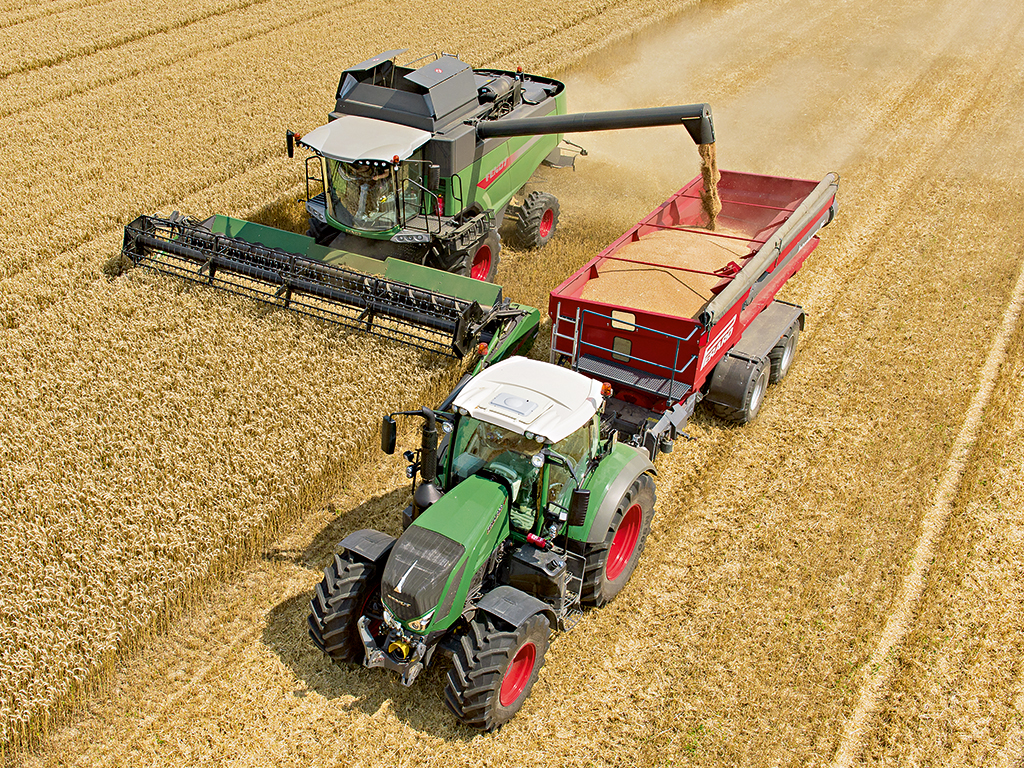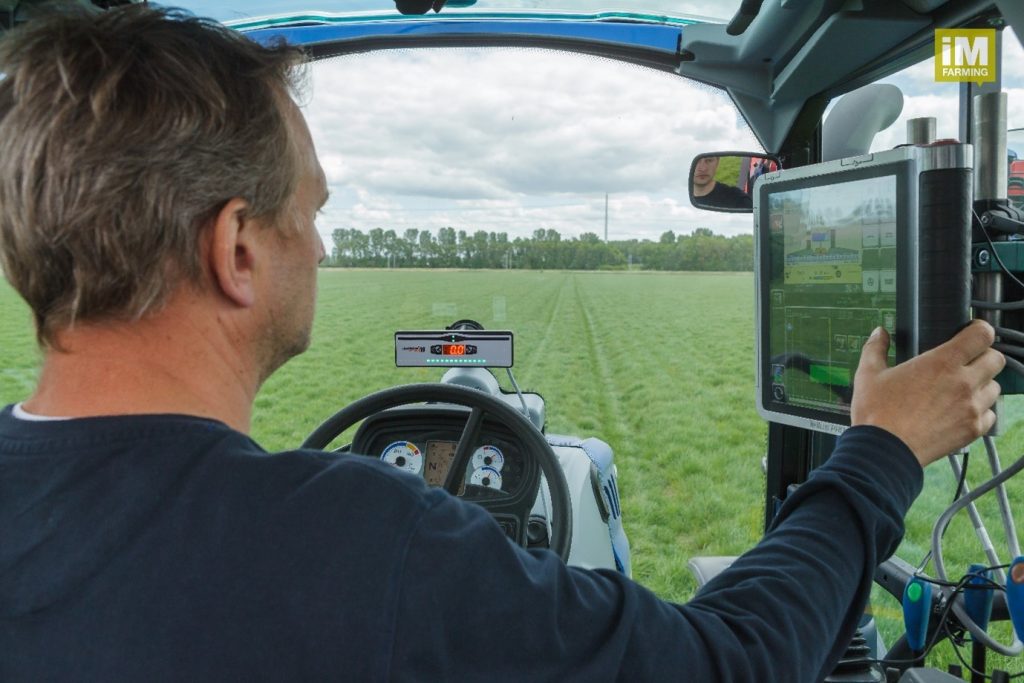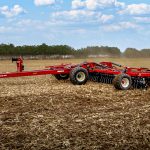Unlocking the full potential of your farm has never been more achievable. Imagine boosting your harvest while saving time and resources.
Precision farming offers this incredible opportunity, allowing you to make every inch of your land work harder and smarter. But to truly harness this power, you need the right tools by your side. The best implements for precision farming are not just about technology; they’re about transforming your approach to agriculture.
Imagine the satisfaction of seeing your crops thrive, knowing you’re using the most efficient methods available. Stay with us, and we’ll guide you through the essential tools that can revolutionize your farming practice, making your efforts not only more productive but also more rewarding.
.jpg)
Advanced Gps Systems
Advanced GPS systems are revolutionizing precision farming, offering farmers unprecedented accuracy in managing their fields. These systems are not just about knowing where you are; they are about optimizing every inch of your farmland for better yields. Imagine being able to plant seeds with pinpoint precision or apply fertilizers exactly where needed, reducing waste and increasing productivity.
What Makes Gps Systems Advanced?
Advanced GPS systems use satellite signals to provide real-time data, which is crucial for precision farming. They integrate with farm machinery to automate tasks and ensure accuracy. This technology helps you map your fields, monitor crop health, and manage resources efficiently.
Benefits Of Using Advanced Gps Systems
These systems enhance efficiency by reducing overlap in planting and harvesting. They save time and reduce costs by minimizing the use of seeds, fertilizers, and chemicals. With precise mapping, you can make informed decisions that directly impact your bottom line.
Real-world Application
I once visited a farm where GPS systems transformed their operations. The farmer showed me how he could plant corn with such precision that every seed had the best chance to grow. He was amazed at how much he saved on resources while boosting his yield.
How Do You Implement Gps Systems?
Start by assessing your farm’s needs and choosing a compatible system. Many providers offer user-friendly interfaces that can be integrated into existing equipment. Training your staff to use the system efficiently is also crucial for maximizing benefits.
Are Gps Systems Worth The Investment?
Consider the long-term savings and increased yield potential. While the initial cost might seem high, the system pays for itself over time through reduced resource use and increased productivity. Wouldn’t it be worth knowing you’re making the most of your land?
Advanced GPS systems are more than just tools—they’re partners in your farming success. Embracing this technology means stepping into the future of agriculture, where precision meets productivity.

Variable Rate Technology
Precision farming thrives with Variable Rate Technology, adjusting inputs like water and fertilizers based on field needs. This approach enhances crop yield while minimizing waste, making it essential for modern agriculture.
Precision farming has transformed the agricultural landscape, allowing farmers to maximize yield while minimizing waste. A standout feature of this revolution is Variable Rate Technology (VRT). VRT enables farmers to apply seeds, fertilizers, and pesticides at variable rates across a field, tailoring inputs to the specific needs of each zone. This precision leads to better crop health and increased efficiency, ultimately boosting profitability. ###Understanding Variable Rate Technology
Variable Rate Technology leverages data to make informed decisions. By using GPS, sensors, and soil sampling, you can create detailed maps of your fields. These maps guide the machinery to adjust the amount of input on-the-go. This means less wastage and a more sustainable farming practice. Imagine walking through a field and being able to see exactly which plants need more nutrients and which are thriving. VRT allows you to do just that, but with high-tech precision. It’s like having a smart assistant in your tractor, ensuring every square inch of your field gets the right care. ###Benefits Of Variable Rate Technology
The benefits of VRT are numerous and impactful. By applying inputs more accurately, you can reduce costs significantly. Fewer inputs mean lower expenses, which directly increases your bottom line. Moreover, VRT can lead to healthier crops. By giving plants exactly what they need, when they need it, you can enhance growth and yield. Healthier crops are also more resistant to pests and diseases, reducing the need for chemical treatments. VRT also supports environmental sustainability. With precise input application, you prevent nutrient runoff into water sources, protecting the surrounding ecosystem. This is not just beneficial for the environment but also for the community that relies on those resources. ###Practical Application Of Variable Rate Technology
Applying VRT on your farm may seem daunting, but it starts with gathering data. Utilize soil sampling and crop monitoring to understand your field’s needs. Then, use this data to create application maps for your equipment. Consider a farmer who noticed uneven growth in his cornfield. By using VRT, he adjusted fertilizer rates across different zones. The result? A more uniform crop stand and an impressive increase in yield. You don’t need to overhaul your entire operation overnight. Begin with a single field or crop, and gradually expand as you become more comfortable. Remember, the goal is to make smarter decisions that lead to better outcomes. ###Challenges And Considerations
While VRT offers remarkable benefits, it also comes with challenges. Initial setup costs can be high, deterring some farmers. However, the long-term savings and increased yield often outweigh these upfront expenses. Technical know-how is another consideration. You’ll need to familiarize yourself with new technology and data interpretation. But investing time in learning can open doors to advanced farming techniques that can transform your operation. Consider how you approach change. Are you willing to embrace new technology for the promise of a better future? Precision farming, especially VRT, is a step toward farming smarter, not harder. Adopting Variable Rate Technology can be a game-changer for your farm. It’s about making every decision count and ensuring each acre of land is used to its full potential. Are you ready to take your farming to the next level?Drones For Crop Monitoring
Drones offer a bird’s-eye view for precision farming, making crop monitoring efficient and accurate. These implements provide real-time data, helping farmers make informed decisions. Enhanced monitoring leads to healthier crops and increased yield.
Drones have revolutionized the way farmers monitor their crops. They allow you to gain a bird’s-eye view of your fields, offering insights that are impossible to get from the ground. With the ability to cover large areas quickly, drones are becoming a vital tool in precision farming.Advantages Of Using Drones In Agriculture
Drones provide a fast, efficient way to collect data. You can monitor crop health, check for pest infestations, and evaluate irrigation needs in real time. This rapid data collection helps you make informed decisions quickly. They also help reduce labor costs. Instead of spending hours walking through fields, a drone can accomplish the same task in minutes. This efficiency allows you to focus your time and resources on other critical areas of your farm.Essential Features To Look For In A Drone
When choosing a drone for crop monitoring, consider its flight time. Longer flight times mean more coverage and less downtime. A drone with a good battery life will save you the hassle of frequent recharges. Camera quality is another crucial factor. High-resolution cameras can capture detailed images, helping you identify issues like nutrient deficiencies or pest damage. A good camera can be the difference between catching a problem early and missing it entirely.Integrating Drone Data With Farm Management Software
To maximize the benefits of drone monitoring, integrate the data with your farm management software. This allows you to analyze and store the information effectively. By comparing current and historical data, you can identify trends and make better predictions. You can also use this data to create precision maps for targeted interventions. Imagine applying fertilizers only where needed, saving money and reducing environmental impact. How much more efficient could your farm become with this level of precision?Challenges And Considerations
While drones offer many benefits, they also come with challenges. Weather conditions can impact their performance. Strong winds and rain can reduce flight time and data quality. Regulations may also affect your ability to use drones. Always check local laws and obtain necessary permits. Staying informed will help you avoid fines and ensure safe operations. What other tools have you found helpful in precision farming? Consider sharing your experiences and insights. Your contribution could help fellow farmers make better decisions.Soil Sensors And Analysis Tools
Soil sensors and analysis tools enhance precision farming by providing real-time data on soil conditions. Farmers can optimize water and nutrient use, boosting crop health and yield. These tools help make informed decisions, leading to efficient farming practices and sustainable agriculture.
Precision farming has transformed the way we approach agriculture, pushing boundaries to maximize yield and efficiency. Among the tools leading this charge are soil sensors and analysis tools. These devices provide critical insights into soil health, moisture levels, and nutrient content. They enable farmers to make informed decisions that enhance crop growth and conserve resources. Whether you’re a seasoned farmer or new to the field, understanding how these tools work can be a game-changer for your agricultural practices.Understanding Soil Sensors
Soil sensors are devices placed in the ground to collect data about various soil properties. They measure elements like temperature, moisture, and salinity. By knowing these factors, you can tailor your irrigation and fertilization strategies to meet the specific needs of your crops. Imagine knowing exactly when your plants need water, rather than guessing.Benefits Of Soil Analysis Tools
Soil analysis tools go beyond just measuring soil properties. They provide detailed reports that guide you on nutrient management. With these insights, you can apply the right amount of fertilizers, reducing waste and cost. This not only benefits your pocket but also the environment by minimizing chemical runoff.Types Of Soil Sensors Available
There are various types of soil sensors, each serving unique purposes. Capacitive sensors measure soil moisture, while resistive sensors focus on salinity levels. Some advanced models even integrate GPS to map soil conditions across your field. Choosing the right sensor depends on your specific farming needs and goals.Integrating Technology With Traditional Practices
Using soil sensors doesn’t mean abandoning traditional farming methods. Instead, they complement each other. You can use the data from sensors to enhance your intuition and experience. Have you ever wondered if your farming techniques could be more efficient? These tools could provide the answer.Cost Vs. Benefit Analysis
While investing in soil sensors might seem expensive initially, the long-term benefits often outweigh the costs. Consider the savings from reduced water usage and optimized fertilizer application. Over time, these savings can lead to increased profits and sustainability. Wouldn’t it be worthwhile to invest in a tool that pays for itself? Incorporating soil sensors and analysis tools into your farming practice can significantly impact your efficiency and sustainability. They offer precise data that traditional methods can’t provide, guiding you toward smarter agricultural practices. Are you ready to take your farming to the next level with precision tools?
Conclusion
Precision farming tools boost efficiency and crop yield. Farmers gain better control over resources. Choosing the right implements saves time and money. Technology improves decision-making and reduces waste. Precision tools support sustainable farming practices. They help meet growing food demands.
Investing in quality equipment enhances farm productivity. Farmers benefit from accurate data and insights. This leads to smarter farming strategies. Precision farming creates a promising future for agriculture. Embrace these tools for better farming outcomes.



